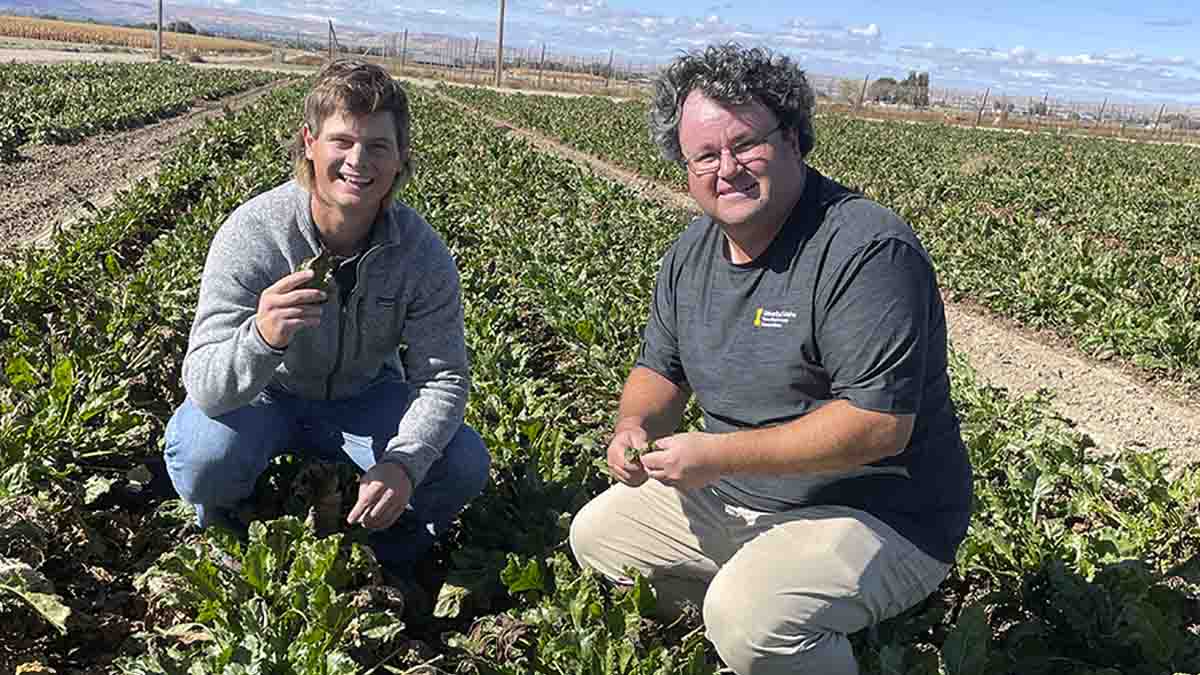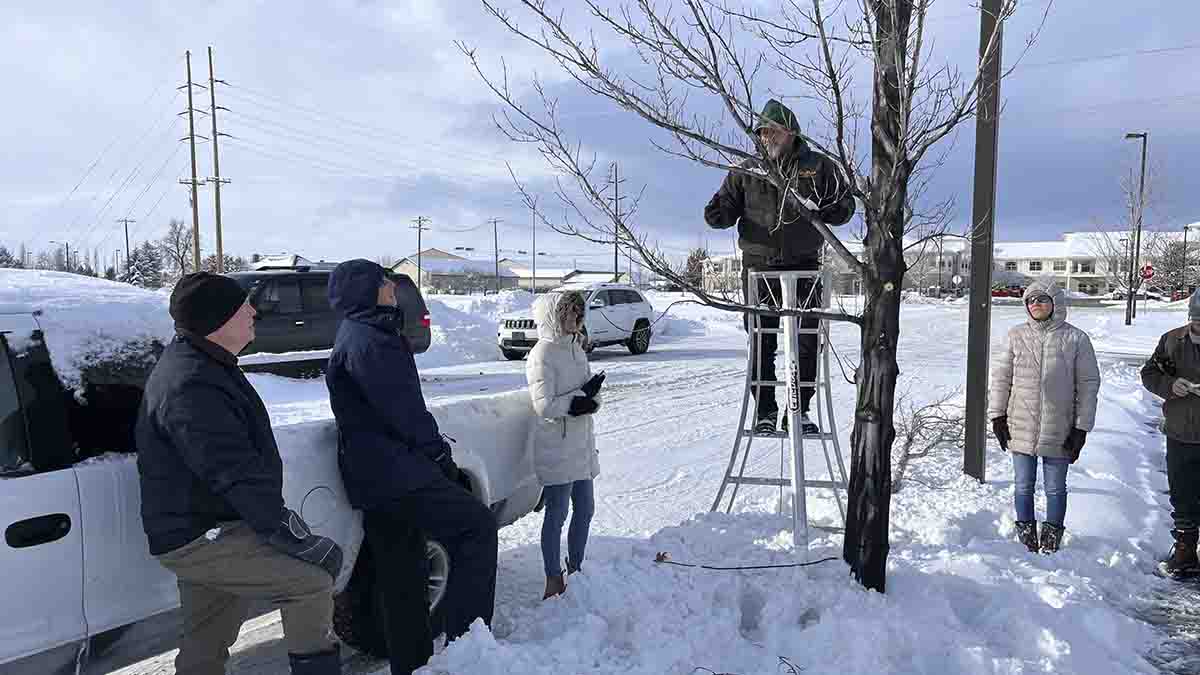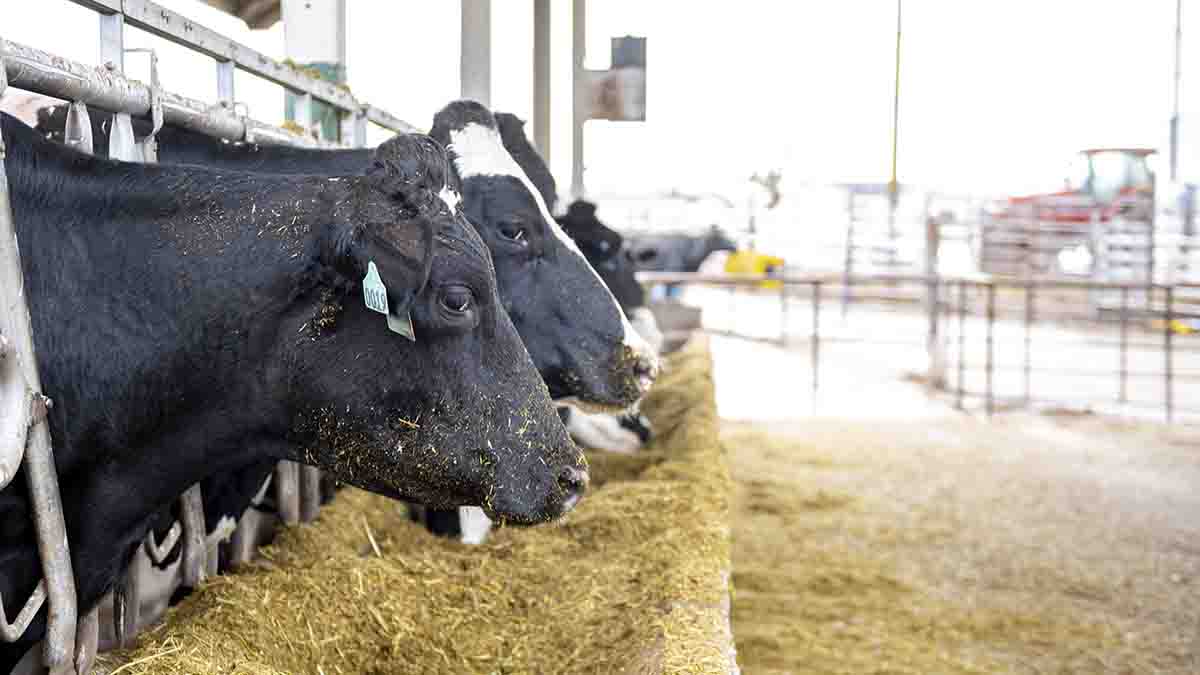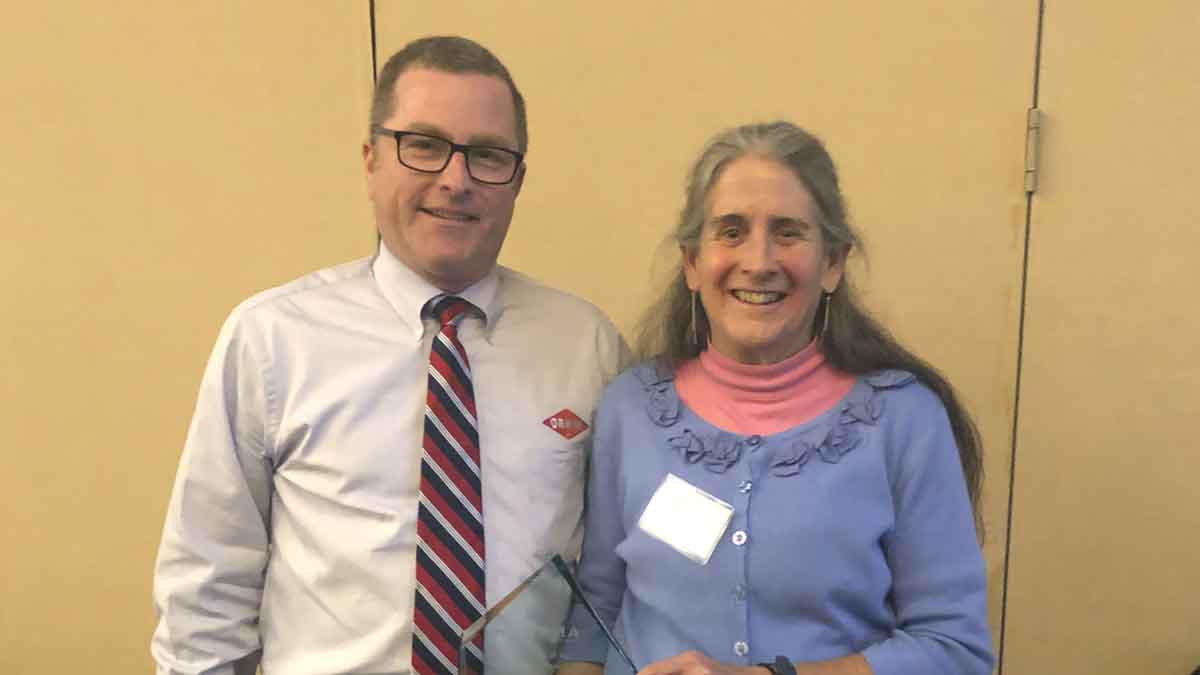Catching Up with CALS — Jan. 10, 2024
Dean's Message — A Puzzle Takes Shape
Think of the impressive capital projects CALS has been completing in recent years as pieces of a great puzzle rather than as stand-alone efforts. Construction of the Idaho Center for Agriculture, Food and the Environment (Idaho CAFE), which will include the nation’s largest research dairy in Rupert, is well underway. We’ve added an organic research orchard, called the Sandpoint Organic Agriculture Center, as well as the Rinker Rock Creek Ranch in the Wood River Valley, which is a unique working ranch that doubles as a living laboratory for developing science-based practices for land managers. We’ve opened a modern, new home for our Seed Potato Germplasm Program, where we produce and distribute disease-free germplasm and minitubers used throughout the world for research and seed propagation. We’ve broken ground on our Meat Science and Innovation Center Honoring Ron Richard. We’ve moved into the new Idaho Center for Plant and Soil Health at our Parma Research and Extension Center with the grand opening/ribbon cutting scheduled for Feb. 20. We’re modifying a space on campus to house the Deep Soil Ecotron, which will help researchers study soil at greater depths than ever before, providing insights into the role deep soils play in carbon sequestration, crop productivity, climate change and water quality.
As important as each of these projects may be individually for the CALS departments that are spearheading them, a greater picture begins to emerge when they’re linked together. Collectively, they provide the infrastructure and framework for CALS faculty to further enhance our college’s reputation through novel research that will prepare producers to supply more food with less impact on the environment in support of a growing population. The picture we’re assembling dovetails well with our college’s Innovative Agriculture and Marketing Partnership (IAMP) grant, formerly known as Climate Smart Commodities. That $55 million U.S. Department of Agriculture (USDA) grant represents the largest award in U of I history and will provide incentives and support to help Idaho producers voluntarily implement practices that improve soil health and limit greenhouse gas emissions.
Idaho CAFE is the key cog within our puzzle, and its contributions toward Idaho agriculture will likely exceed all the other pieces combined. The dairy is on track for completion and milking should commence in early 2025, starting with 1,000 cows and gradually scaling up to 2,000 animals. Idaho is the No. 3 milk-producing state, with dairy sales comprising 38% of the state’s agricultural cash receipts. For decades to come, Idaho CAFE will generate skilled labor and science-based answers applicable to the unique circumstances of dairy production within the arid West. At an adjacent soil health demonstration farm, researchers will study the relationship between the application of dairy nutrients and soil health and water quality. This work will benefit crop producers while furthering our quest to extract value from dairy waste.
Idaho CAFE represents an enormous partnership also involving the state, federal partners such as USDA, industry, commodity groups and Magic Valley communities. Furthermore, the project will touch upon several other U of I colleges, requiring expertise in business, engineering and many other disciplines. The progress we’ve made on Idaho CAFE proves what our college and university can accomplish when we think big and take bold action. Within the Idaho dairy industry, which comprises dairies of much greater size than in other regions of the country, the excitement is palpable about having research conducted on the appropriate scale. Consider the words of Kuna dairyman Michael Siegersma Jr.: “In our industry, trials are often done on a very small scale. It’s hard to make confident decisions on a large dairy based on the results of a 20-cow study,” Siegersma said. “Idaho CAFE represents an exciting opportunity for our industry to have a research dairy of this scale, where research can be done on a facility that more models our western dairy designs and the number of cows.”

Michael P. Parrella
Dean
College of Agricultural and Life Sciences
By the Numbers
University of Idaho Extension has released preliminary results of its 2023 small grains trials of spring varieties. In Aberdeen, Dayn was the top yielding hard white spring wheat with 153 bushels per acre, compared with the average in the class of 127 bushels per acre. UI Stone was the top yielding soft white spring wheat at 154 bushels per acre, compared with the average in the class of 140 bushels per acre. The top yielding spring feed and food barley was Altorado at 176 bushels per acre, compared with an average of 123 bushels per acre in the class. BC Lexy was the top yielding spring malt barley at 178 bushels per acre, compared with the average in the class of 147 bushels per acre.
In Idaho Falls, Dayn was the top yielding hard spring wheat at 142 bushels per acre, compared with the average in the class of 125 bushels per acre. The top yielding soft white spring wheat was IDO1902S, which averaged 143 bushels per acre, compared with the average in the class of 130 bushels per acre. The top yielding spring feed and food barley, H0516-429, averaged 165 bushels per acre, compared with the average in the class of 137 bushels per acre. The top yielding spring malt barley was Esma, which yielded 170 bushels per acre, compared with the average in the class of 151 bushels per acre.
In Rupert, the top yielding hard spring wheat variety was UI Gold, which averaged 133 bushels per acre, compared with the average in the class of 117 bushels per acre. The top yielding soft white spring wheat was WB6430, which averaged 128 bushels per acre, compared with the average in the class of 112 bushels per acre. The top yielding spring feed and food barley was 10ARS191-3, which averaged 174 bushels per acre, compared with the average in the class of 129 bushels per acre. The top yielding spring malt barley was BC Lexy, which averaged 171 bushels per acre, compared with the average in the class of 146 bushels per acre.
In Soda Springs, the top yielding spring feed and food barley was 10ARS191-3, which averaged 68 bushels per acre, compared with the average in the class of 52 bushels per acre. The top yielding malt barley was 17ARS072-5, which averaged 66 bushels per acre, compared with the average in the class of 55 bushels per acre. The top yielding hard spring wheat was Hale, which averaged 58 bushels per acre, compared with the average in the class of 47 bushels per acre. The top yielding soft white spring wheat was UI Stone, which averaged 64 bushels per acre, compared with the average in the class of 52 bushels per acre.
In Tetonia, the top yielding hard spring wheat was WB9707, which averaged 141 bushels per acre, compared with the average in the class of 105 bushels per acre. The top yielding soft white spring wheat was Melba (club), which averaged 136 bushels per acre, compared with the average in the class of 116 bushels per acre. The top yielding spring feed and food barley was Kardia, which averaged 131 bushels per acre, compared with the average in the class of 106 bushels per acre.
Our Stories
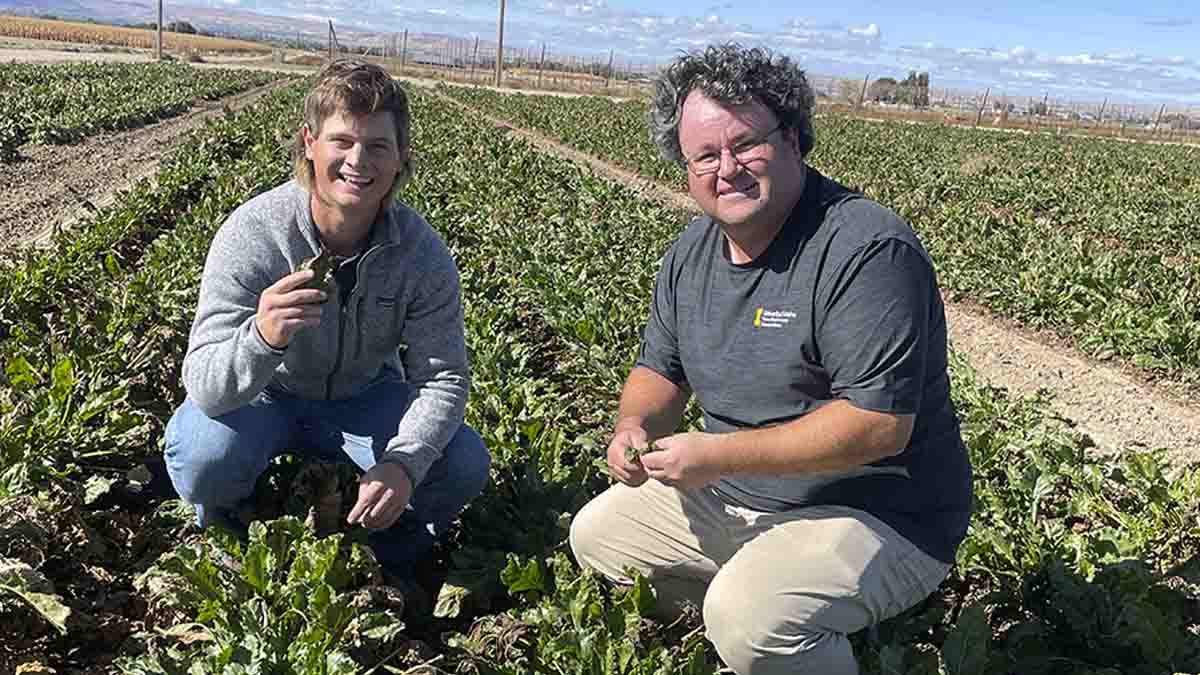
Addressing Sugar Beet Threat
University of Idaho researchers have promising leads on management practices and new pesticide options to help the state’s sugar beet farmers get a handle on a fungal disease that’s posing an increasing threat in their fields.
Cercospora beticola thrives in moist, warm conditions and creates necrotic spots on sugar beet leaves. Plants expend their energy regrowing dead or damaged leaves at the expense of sugar production, resulting in yield losses of up to 40% in susceptible cultivars.
James Woodhall, an associate professor of plant pathology based at the U of I Parma Research and Extension Center, and his graduate student, Hayden Woods, obtained an $18,000 grant through the U.S. Department of Agriculture’s IR-4 Project to evaluate seven different fungicide programs for controlling the disease. IR-4 develops data for the registration of safe and effective pest management solutions for specialty crops with the U.S. Environmental Protection Agency.
Amalgamated Sugar Co. is conducting separate trials assessing the same fungicide programs.
“This is a sugar beet disease that is gaining importance in Idaho. It just seems to be getting more and more severe,” Woodhall said. “It was first found in Idaho in the 1960s, but it’s slowly getting worse.”
Woodhall believes a combination of factors have contributed to mounting grower headaches from Cercospora beticola. Changes in irrigation likely play a role, as most farmers have switched from in-furrow irrigation to overhead sprinklers, which moisten leaves and create favorable conditions for spores. He also suspects the disease is entering the state on growers’ sugar beet seed. It’s likely overwintering in infected sugar beet tissue in fields. Large Cercospora spores don’t travel far but can take hold in adjacent fields and spread slowly from one field to the next.
Perhaps the greatest challenge growers face in managing Cercospora is that it quickly develops resistance to pesticides. Woodhall and Woods have sought to identify new modes of action to include in pesticide programs to avoid the onset of resistance to commonly used products.
“The long-term approach is we need to have resistant varieties,” Woodhall said. “Our near-term approach is we need cultural management and we need additional chemical management options.”
Woodhall and Woods enjoyed good results with a treatment regime that included an application of a fungicide that’s already labeled for sugar beets but not widely used, containing the active ingredient thiophanate-methyl. The addition of that product contributed to a 67% reduction in disease pressure, compared with a 35% reduction resulting from a comparable program that didn’t include thiophanate-methyl.
They also found two fungicides that aren’t currently labeled for sugar beets that provided strong control against Cercospora beticola. When applied four times throughout the season, one product reduced disease pressure by 44%. Four applications of the other promising product reduced pressure by 31%. Furthermore, a promising new biological product reduced disease pressure by 40%.
It would likely take three to four years to get special-needs labels approved for any of the products that aren’t currently labeled for sugar beets.
“These are screening trials just to see if it works and how it performs. Once we get all of this data back, if it looks good it will be tested for crop residues,” said Ronda Hirnyck, UI Extension pesticide specialist and principal investigator for U of I’s IR4 Project. “We like to have products we know perform in the field in the real world before we spend money on residue trials.”
Through their research, Woodhall and Woods also found that irrigation methods play an important role in disease pressure. To investigate this, they used a large plot trial over a whole field as opposed to the small plot trials typically done in field work. The work on the large plots was more representative and showed the potential difference irrigation type can have on disease development. Where in-furrow irrigation was used, Cercospora pressure was reduced by 35% compared with plots irrigated with overhead sprinklers.
Tilling soil and burying debris from the previous crop can reduce soil-borne Cercospora inoculum. Woodhall and Woods are also working to develop a new diagnostic laboratory test for Cercospora in soil. They have spore traps set out near an infected field to capture Cerpsopora beticola spores, which should help them establish a primer for a soil test. Currently, they must rely on plant tissue or culture to accurately test for the pathogen.
“We’re starting to get more recognition of the seriousness of this disease — 2022 and 2023, those are the worst years we’ve had in the state,” Woods said.
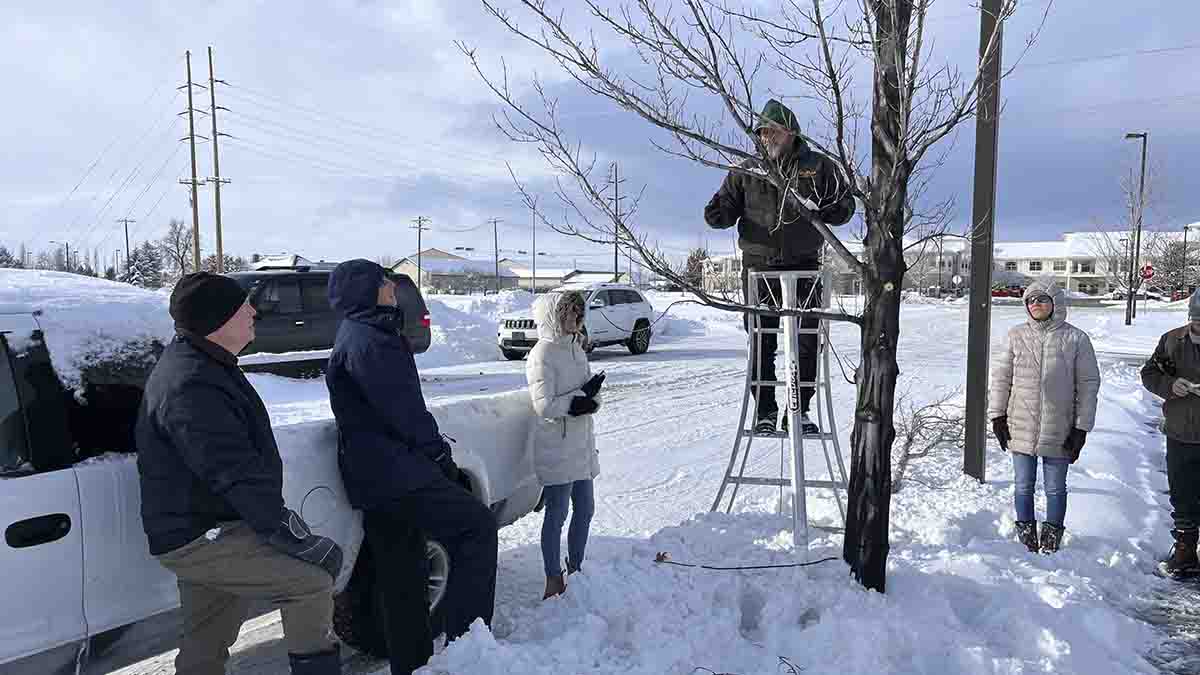
Register for Master Gardeners
University of Idaho Extension educators in eastern Idaho will offer the popular Idaho Master Gardener Program virtually this winter via the web-based teaching platform Canvas, making the program more flexible and accessible to horticulture enthusiasts statewide.
Gardeners who reside in a county that doesn’t offer the program are invited to contact UI Extension, Bonneville County and register for the virtual course, organized by educator Ron Patterson, who serves Bonneville County, and Reed Findlay, an Extension educator serving Bingham and Bannock counties. Participants from outside of eastern Idaho will work with their local Extension educator to complete the program’s required community service hours.
Registration for the virtual program will be open through the end of January, with the course beginning Feb. 14 and running through May 1. Participation fees vary by county.
“One of the big pushes why I’m doing this is to make it so people anywhere in the state can still go through the Master Gardener Program and get certification,” Patterson said. “We’ll handle anybody in the state who doesn’t have a program in their county.”
Thirty-two of the state’s 44 counties offer the Idaho Master Gardener Program in some form, and most of the counties either start their programs soon or are running them currently.
Patterson and Findlay switched from in-person instruction to a virtual format during the COVID-19 pandemic and have continued to operate virtually due to the convenience for both faculty and participants. U of I uses Canvas as its course-management tool. By moving Master Gardener content to Canvas this season, Patterson and Findlay will be able to offer asynchronous lessons — pre-recorded videos that students will watch at their own pace, according to their own schedule.
Canvas will document which videos participants have watched. Participants will also take quizzes based on course material using Canvas.
Last season, participants met by Zoom every Wednesday night for three-hour sessions. This season, they’ll view videos on their own time and log on for an hour every Wednesday night at 7 p.m. to hear an in-depth presentation led by Extension faculty on a chosen topic, such as insects or soil health. They’ll also participate in a half-hour question-and-answer session.
Extension educators in surrounding counties are invited to contribute videos or participate in the question-and-answer sessions.
The eastern Idaho program requires 36 hours of class instruction and 40 hours of volunteer service for certification. Service hours must be approved by a local county Extension educator. Projects may include tending to a community garden, raising produce for a food bank, staffing Extension diagnostic clinics for gardeners, work on a demonstration garden or staffing an information booth about the program at a state fair, for example.
“Most people who take the class really want to learn about all things gardening, but the purpose of the program is to develop volunteers for our programs so we can help more people with their gardening questions,” said UI Extension Educator Tom Jacobsen, based in Fremont County. “They’re also going to be able to serve other people around them, and I think that’s a pretty important thing.”
Andy West, a UI Extension educator serving Twin Falls County, is offering a separate Master Gardener program in Magic Valley using a hybrid of Zoom and in-person instruction. His program will start Jan. 25, convening on Wednesdays from 6-9 p.m. He’ll also record sessions so those who miss them can watch them later. People in his county told him they wanted to resume some in-person instruction following the COVID-19 pandemic, but he’s referred many people from other counties seeking a virtual option to the eastern Idaho program.
Having a Twin Falls program also enables him to gear curriculum according to the Magic Valley growing zone. He will, nonetheless, use some of the eastern Idaho videos to supplement his own program, and he assists the eastern Idaho educators, as well.
Extension Educator Grant Loomis, of Blaine County, plans to make the eastern Idaho program’s content and quizzes available to residents of his county who have expressed an interest in the information but aren’t necessarily interested in completing the volunteer hours to become certified. Others in Blaine County will commute to Twin Falls.
Blaine, Valley and Teton counties, which are part of the same growing zone, will host their own hour-long calls on Thursdays at noon using Canvas or Master Gardener-related discussions. Valley and Teton counties will also host hands-on Master Gardener activities.
Contact your local county office for more information on the Idaho Master Gardener Program.
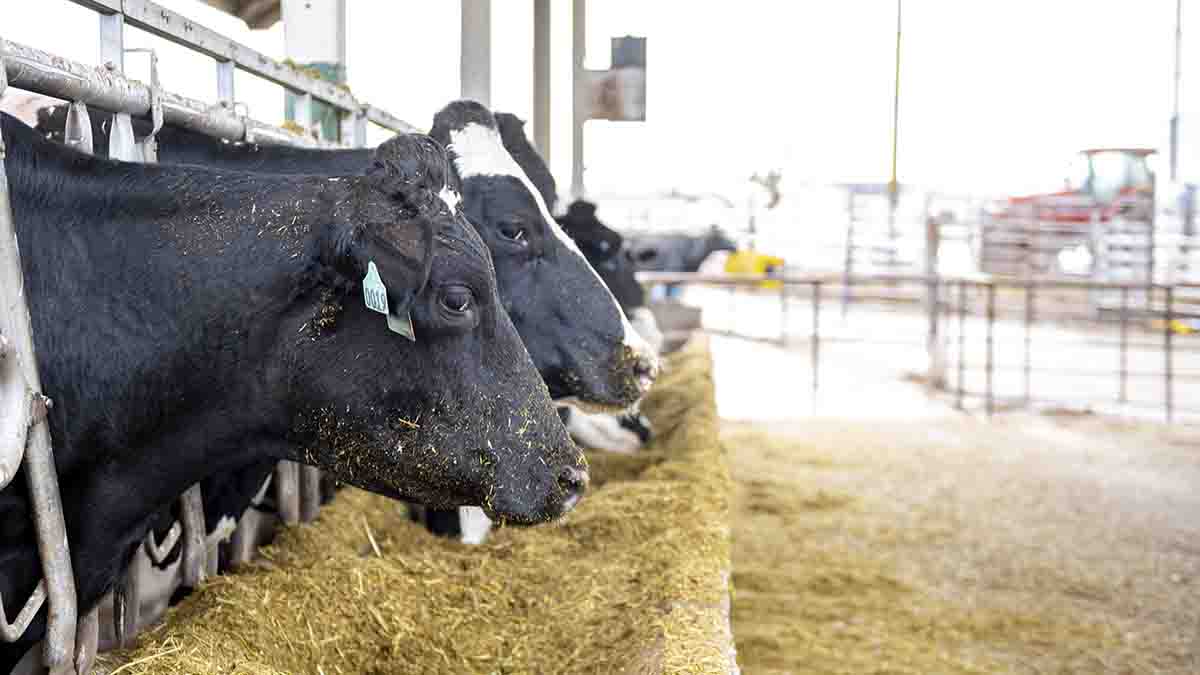
Idaho Ag Sets Records
Idaho agriculture overcame a struggling dairy market to record a second consecutive year of stellar cash receipts in 2023, propelled by record values of four of the state’s major crops, according to a new University of Idaho economic report.
Idaho agricultural cash receipts for the year totaled $11.157 billion, down by just 1% from the record-high number food producers celebrated in 2022, according to “The Financial Condition of Idaho Agriculture: 2023” by U of I agricultural economists Brett Wilder and Xiaoxue “Rita” Du.
The 2023 report concludes the state’s farmers brought in record revenue from sugar beets, up by 25%; potatoes, up by 14%; cattle and calves, up by 18%; and barley, up by 17%.
The U of I economists presented their report during a series of Idaho Ag Outlook seminars, featuring leading industry experts and hosted Dec. 12 in Idaho Falls, Dec. 13 in Twin Falls, Dec. 14 in Nampa and Dec. 19 in Lewiston.
“We’ve had back-to-back excellent years to be in Idaho agriculture,” Wilder said. “We’ve had all-time record highs in four commodity groups.”
Offsetting some of those gains, however, was an 18% revenue drop from Idaho’s top commodity, dairy, which represents nearly a third of the state’s total agricultural cash receipts. Idaho still ranks as the nation’s No. 3 producer of dairy, with the value of its production declining to just over $3.5 billion in 2023. Evidencing Idaho dairymen’s struggles, the U.S. Department of Agriculture’s Dairy Margin Coverage Program paid out in Idaho during every month of 2023.
After expenses, however, the report estimates farm profits will be down by 11% in 2023, at $3.769 billion. It’s a strong earnings total, nonetheless, following Idaho’s record 112% net farm income increase in 2022.
“It’s a very good number. We’re still near all-time highs,” Wilder said. “We’re down 11% year over year but the U.S. is down 17%, so we’re still outperforming the rest of the country. Farmers and ranchers did well in 2023.”
Increasing expenses were mostly driven by high interest rates. Farmers’ interest expenses are estimated to increase 42% to $714 million in 2023. Idaho farmers are also expected to take a hit regarding government payments, projected to decline by 22% to $153 million in 2023.
Looking ahead, economists predict growth in milk prices in 2024, primarily because the U.S. has the cheapest dairy prices, which should give producers an export boost. Idaho is also poised to add new dairy processing capacity.
Feed prices, both of hay and grain, are expected to decline. But Wilder expects the market for cattle and calves will be especially strong in 2024 due to the combination of extremely tight inventory and strong demand. Wilder believes cattlemen have begun keeping their animals much longer to increase carcass weight.
“If you own cows today and don’t have to go buy calves at the prices that are being asked, it’s a fun time to be in the beef industry,” Wilder said.
U of I agricultural economist Xiaoli Etienne, Idaho Wheat Commission Bill Flory Endowed Chair in Risk Management, predicts most farming inputs will hold steady or decline slightly in 2024. Gasoline is forecast to drop 2% in 2024, while diesel prices should remain the same or drop slightly. Farm chemical prices dropped by 20% in the past year and may continue to decline in 2024. The value of Idaho farmland and cropland rental rates should remain stable throughout the coming year. Electricity prices should hold steady or increase slightly, as should machinery costs.
Costs of corn, wheat and barley seed for planting should increase slightly. Hired labor costs are expected to climb by 2.04%. While the average loan rate rose 35% throughout the past year, the Federal Reserve is expected to begin cutting interest rates in 2024.
Wilder anticipates a more significant drop in agricultural cash receipts will occur in 2024.
“My expectation in 2024 is we should be down below $11 billion but still above $10 billion, unless something catastrophic happens,” Wilder said.
Read about a Snake River High School agriculture class that attended the Idaho Ag Outlook Seminar in Idaho Falls to witness the real-world applications of lessons learned in the classroom.
Faces and Places
A total of 314 CALS students were named to the CALS Dean's List for the fall 2023 semester. These students achieved a GPA of 3.5 or better in at least 12 graded credits.
UI Extension Pesticide Specialist Ronda Hirnyck received a 2023 SOAR Award from the IR-4 Project. The SOAR award honors partners who exemplify the areas of service, outreach, altruism and research, while supporting specialty crop growers and the mission of the IR-4 Project.
Agricultural education students heading out for their student teaching semester include: Tanner Anderson (Pomeroy, Washington), Elizabeth Bearden (Kuna), Sophia Cori (Mountain Home), Kennedy Cox (Liberty High School, Spangle, Washington), Hannah Davis (Nezperce), Courtney Marshall (Broadwater High School, Townsend, Montana), Alec Vineyard (Pilot Point High School, Texas), Alissa Whitaker (Ellensburg, Washington) and Shaylyn Young (American Falls).
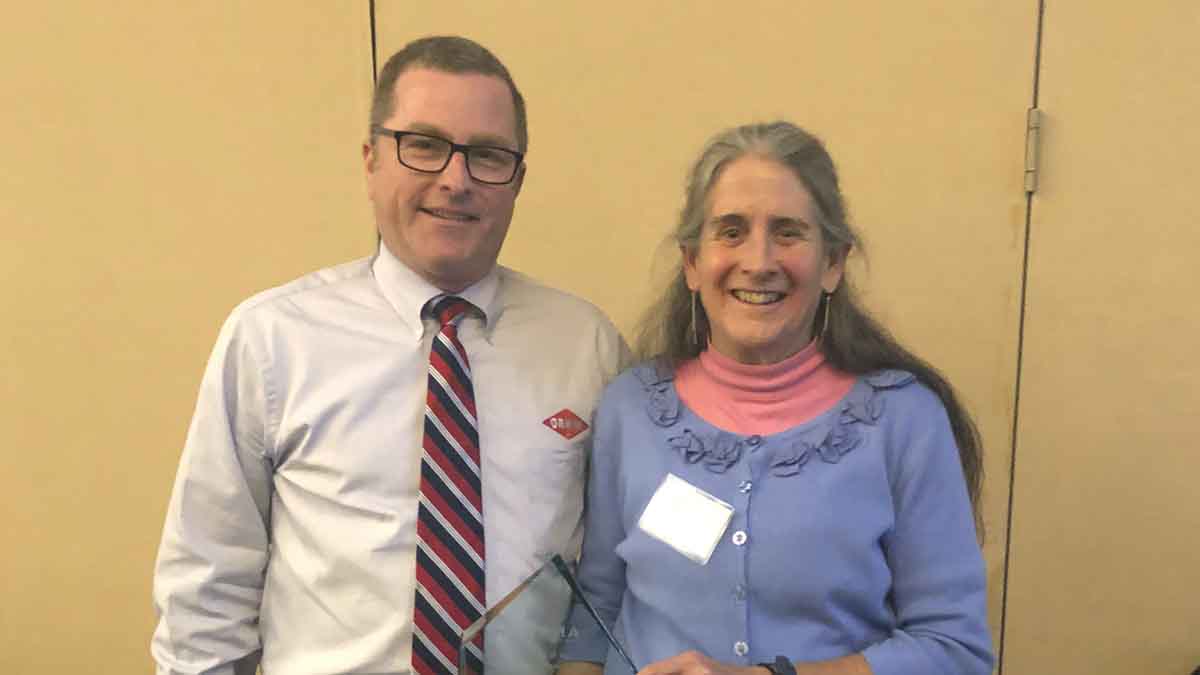

Events
- Jan. 15 — Preserve @ Home, Online
- Jan. 17 — Heritage Orchard Conference, Sandpoint Organic Agriculture Center
- Jan. 17-18 — 56th annual Idaho Potato Conference and Eastern Idaho Ag Expo, Pocatello
- Feb. 6-9 — Cereal School (pdf), Burley, Pocatello, Idaho Falls, St. Anthony, Soda Springs, Preston
- Feb. 17-19 — Know Your Government, Boise
- Feb. 20 — Grand Opening - Idaho Center for Plant and Soil Health, Parma







